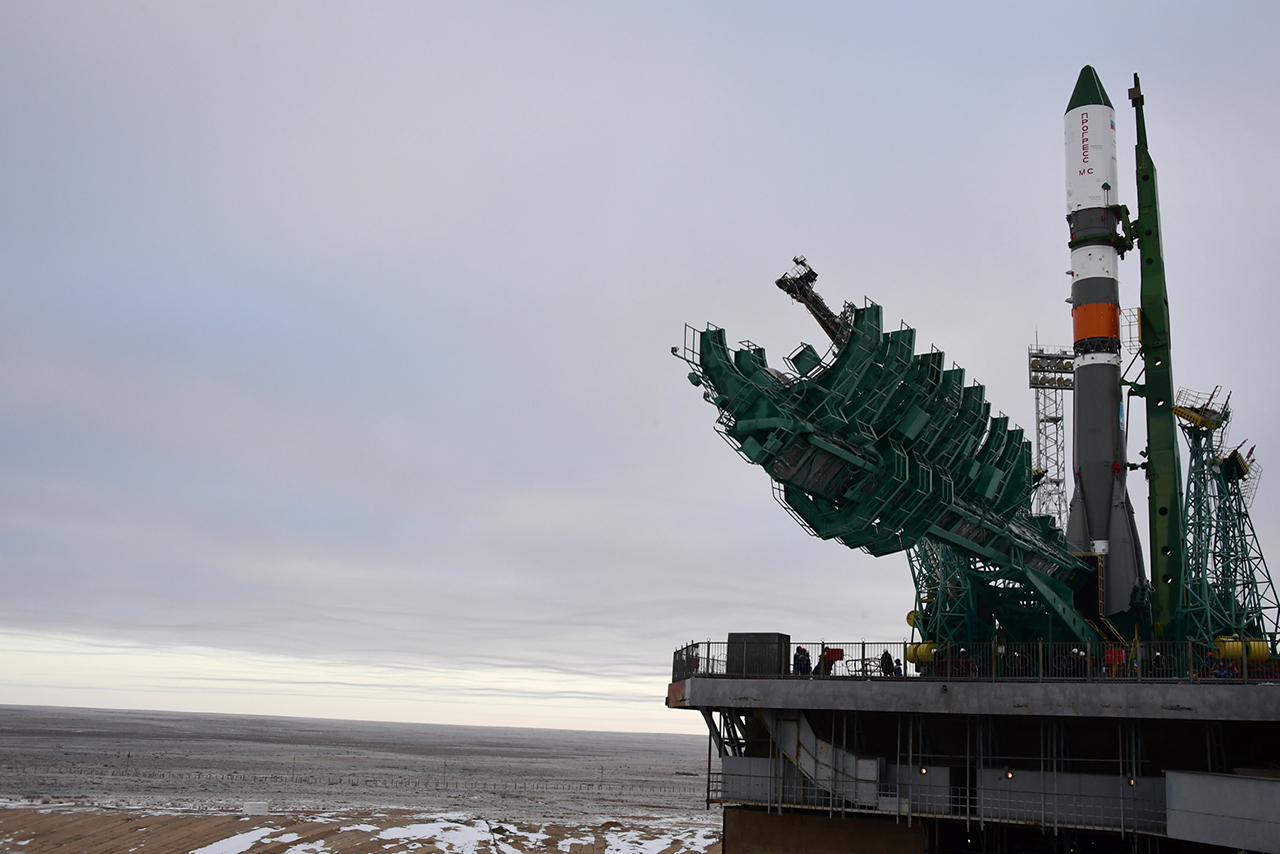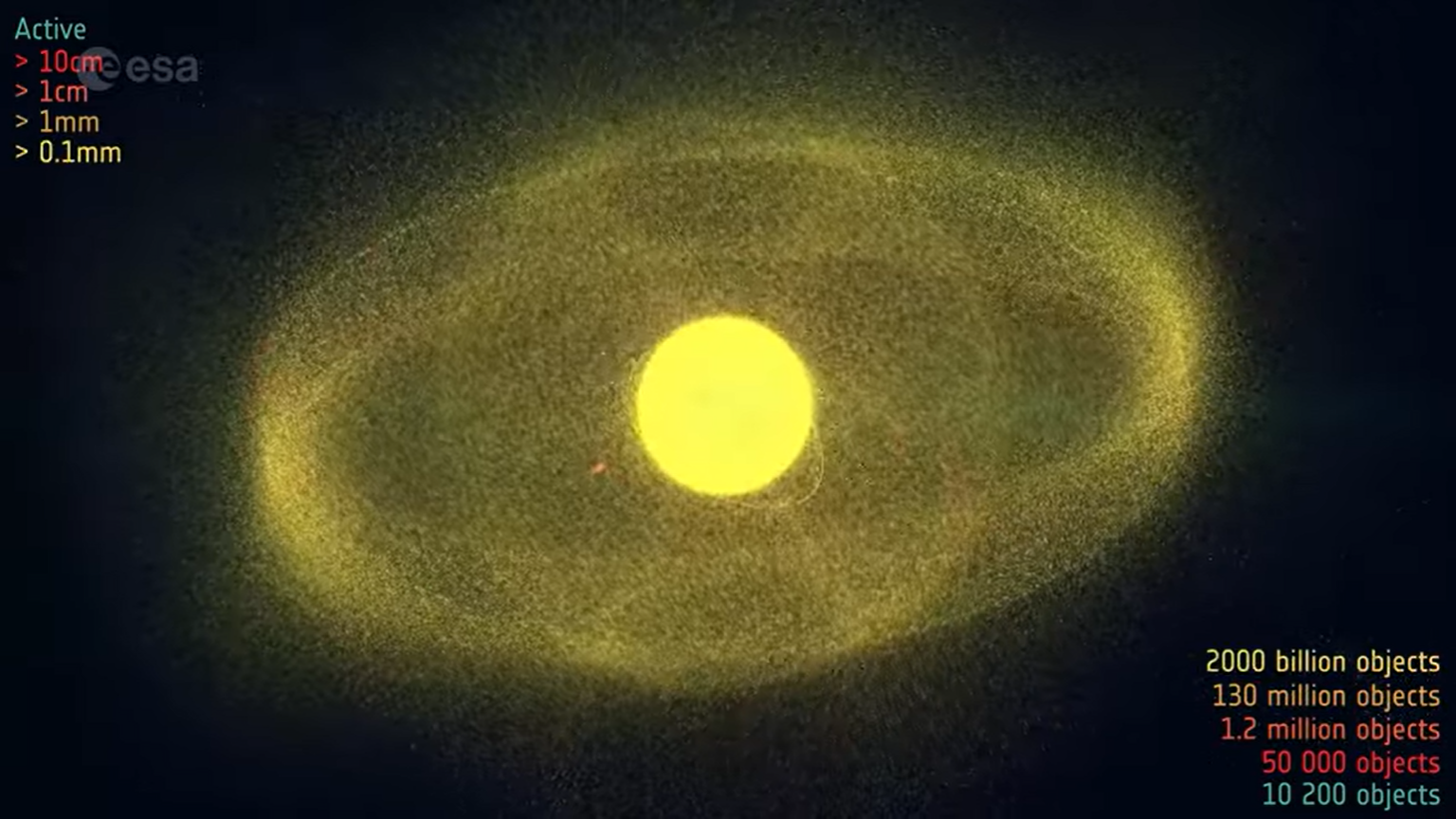Watch SpaceX and Russia launch a Valentine's Day rocket doubleheader tonight
The dual rocket launches begin at 11:21 p.m. EST (0421 Feb. 15 GMT).
Editor's note: Russia has successfully launched the Progress 77 cargo ship. SpaceX has delayed the launch of its next Starlink mission to Monday, Feb. 15, due to bad weather.
CAPE CANAVERAL, Fla. — Valentine's Day could be full of fireworks this year as both SpaceX and Russia's space agency Roscosmos are working towards a launch doubleheader tonight (Feb. 14).
The California-based SpaceX is set to send a full stack of Starlink satellites into space, while Russia and NASA are teaming up to launch a cargo ship to the International Space Station. You can watch the action live online.
SpaceX will kick off the festivities as one of its Falcon 9 rockets is scheduled to lift off from Space Launch Complex 40 at Cape Canaveral Space Force Station at 11:21 a.m. EST (0421 GMT on Feb. 15), followed by a Soyuz 2.1a rocket from Baikonur Cosmodrome in Kazakhstan. That Russian launch will carry the Progress MS-16 spacecraft, also known as Progress 77, to the space station at 11:45 p.m. EDT (0445 GMT on Feb. 15).
You can watch both launches live here and on the Space.com homepage, courtesy of SpaceX and NASA, beginning with SpaceX, which will host a launch webcast about 15 minutes before liftoff. You can also watch the Starlink launch directly via SpaceX. The Progress 77 launch will also be broadcast by NASA, with NASA's webcast beginning at 11:15 p.m. EST (0415 GMT).
Related: Valentine's Day in space: Cosmic love photos
After a few recent delays and some mission swapping, SpaceX is back on the launch pad, preparing to send its next Starlink mission into space. That flight comes just 10 days after its last Starlink mission, and could be the first of two launches this week for the private spaceflight company.
Breaking space news, the latest updates on rocket launches, skywatching events and more!
SpaceX deployed its fleet of recovery ships a few days before launch, with its drone ship "Just Read the Instructions" set to catch this booster. If successful, the landing will mark the 75th recovery for SpaceX since the company landed its first booster in 2015.
Starring in today's mission will be the booster known as B1059, set for its sixth flight. This first stage previously ferried two different SpaceX Dragon cargo resupply missions to the International Space Station as part of NASA's CRS-19 and CRS-20 flights, a Starlink mission last June, an Earth-observing satellite for Argentina (SAOCOM-1B in August 2020), and a spy satellite for the U.S government as part of the NROL-108 mission in December. Sunday's flight will mark the second Starlink payload this particular booster has carried.
If all goes as planned, approximately nine minutes after liftoff, B1059 is set to touchback down on the deck of the drone ship, capping off another successful mission.
Related: SpaceX's Starlink satellite megaconstellation launches in photos
SpaceX created its Starlink internet program with one major goal: to connect users around the globe and provide reliable and affordable internet service, in particular, those in remote and rural areas. To that end, SpaceX planned for its initial Starlink constellation to contain 1,440 of the flat-paneled internet beaming satellites. The company currently has permission to launch up to 30,000 Starlinks satellites, with plans to launch even more.
With more than 1,000 satellites already in orbit, SpaceX officially offered the service to the public this past week. Customers can order the necessary hardware and sign up via the company's website, although there is a disclaimer that it is only open to a limited number of customers per service area.
The launch followed an extensive public and private beta-testing phase, called "Better than nothing," which was recently extended to folks in the U.K.
SpaceX deployed its twin fairing catchers ahead of Sunday's launch, and will be recovering them following splashdown. The fairing pieces (or the two halves of the protective "nose cone" on the rocket's upper stage) are equipped with parachutes and navigation software that guides each piece to a designated recovery zone where they are either caught in mid air or scooped out of the water by the company's two net-equipped boats — called GO Ms. Tree and GO Ms. Chief.
Those recovery efforts typically take place about 45 minutes after liftoff.
Currently, weather is 40% "go" for Sunday's launch opportunity, with the main weather concern being the potential for storm clouds over the launch site. There is a backup launch opportunity on Monday night, if the need should arise.
The forecast on Monday improves to 60% favorable.
A launch doubleheader
Less than 30 minutes after SpaceX's Falcon 9 rockets hauls its payload into, across the globe, Russia's Soyuz will be taking to the skies, to deliver more than 5,000 lbs. of supplies to the astronauts on the space station.
The Progress supply ship is bringing approximately 5,424 lbs. (2,460 kilograms) of cargo and supplies for the crew currently on board the station. That bounty includes 3,086 lbs. (1,400 kg) of research and crew supplies, along with fresh water, nitrogen gas and propellant for the station’s Zvezda service module propulsion system.
Following Sunday's launch, it will arrive at the orbital outpost on Wednesday at 1:20 a.m. EST (0620 GMT), docking at the Pirs docking compartment.
It will remain attached to the station until July, when it will detach from the ISS (along with the Pirs), and perform a destructive reentry where both will burn up in the Earth's atmosphere. This will allow Roscosmos to bring up a new module — the largest addition to the Russian side of the space station in twenty years.
Pirs currently serves as an airlock for Russian astronauts to use when conducting spacewalks and also as a docking port for visiting spacecraft. (There is another, similar port that will remain on station called Poisk.)
Correction: An earlier version of this article misstated the docking day for Progress 77. It is Wednesday (Feb. 17), not Tuesday.
Follow Amy Thompson on Twitter @astrogingersnap. Follow us on Twitter @Spacedotcom or Facebook.

Amy Thompson is a Florida-based space and science journalist, who joined Space.com as a contributing writer in 2015. She's passionate about all things space and is a huge science and science-fiction geek. Star Wars is her favorite fandom, with that sassy little droid, R2D2 being her favorite. She studied science at the University of Florida, earning a degree in microbiology. Her work has also been published in Newsweek, VICE, Smithsonian, and many more. Now she chases rockets, writing about launches, commercial space, space station science, and everything in between.

